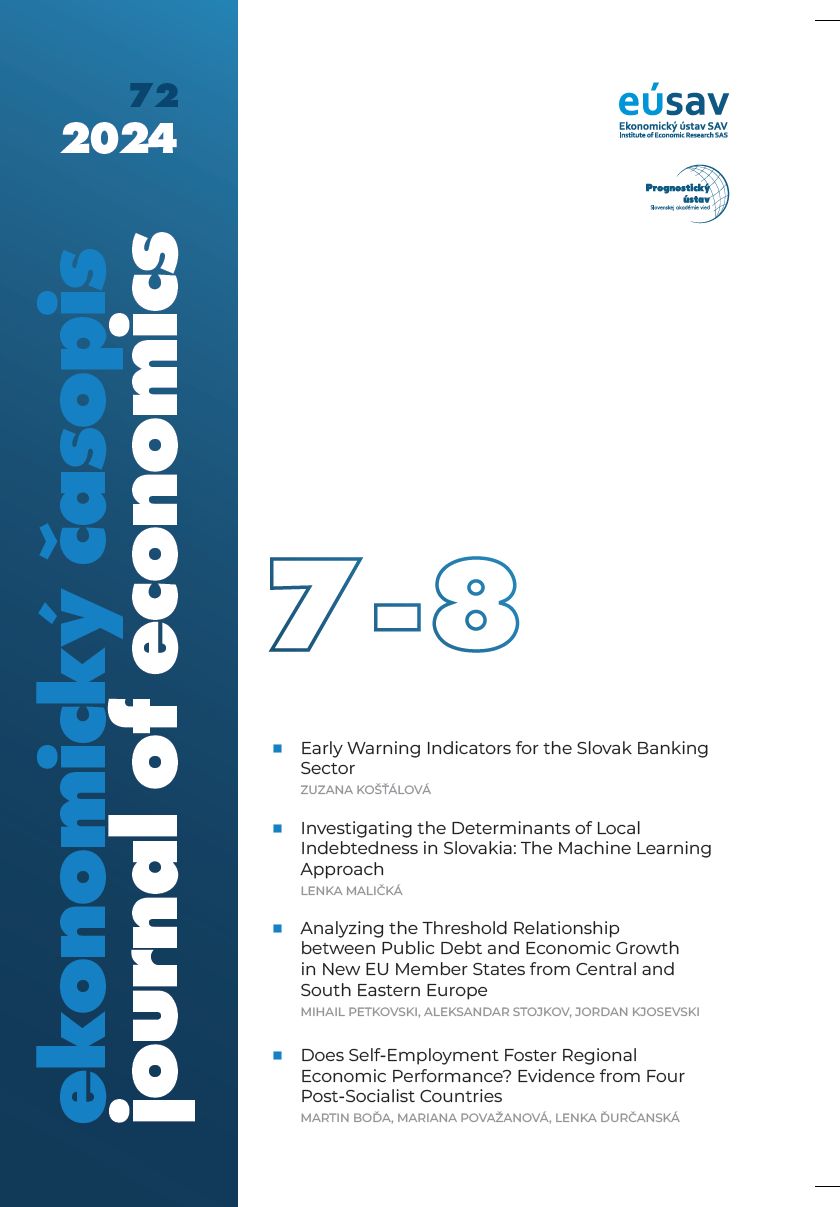Analyzing the Threshold Relationship between Public Debt and Economic Growth in New EU Member States from Central and South Eastern Europe
DOI:
https://doi.org/10.31577/ekoncas.2024.07-08.03%20Keywords:
public debt;, economic growth, EU, debt thresholdAbstract
This paper examines the relationship between public debt and economic growth in 11 EU new member states (NMS) from Central and South Eastern Europe during the period 2000 – 2021. We explore the potential non-linear (quadratic) nature of this relationship in the context of these diverse countries with varying economic, institutional, and financial backgrounds. To account for their heterogeneity, we divide them into three more homogeneous sub-groups: South Eastern European, Baltic, and Visegrad countries. The findings suggest the existence of a "U"-inverted relationship, indicating that public debt has a positive effect on growth up to a certain threshold, beyond which a negative effect prevails. The estimated debt-to-GDP tipping point ranges from 58.5% to 73.5% of GDP, depending on the sub-group. These results contribute to a deeper understanding of the implications of high public debt levels in NMS and provide valuable insights for the ongoing discussions on the design of a new EU fiscal rules framework.
Downloads
Published
Issue
Section
License
Copyright (c) 2025 Mihail Petkovski, Aleksandar Stojkov, Jordan Kjosevski

This work is licensed under a Creative Commons Attribution-NonCommercial-NoDerivatives 4.0 International License.


